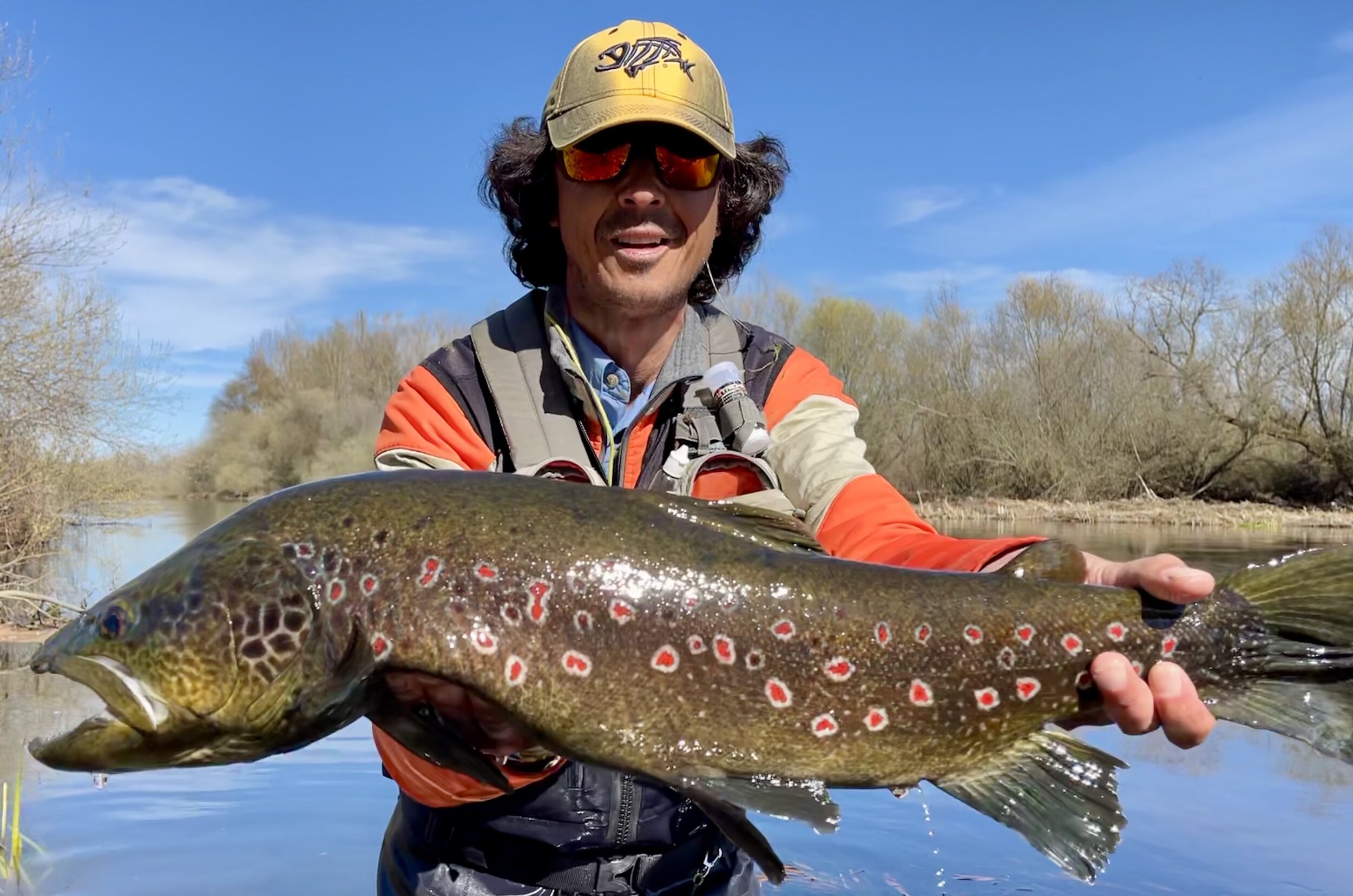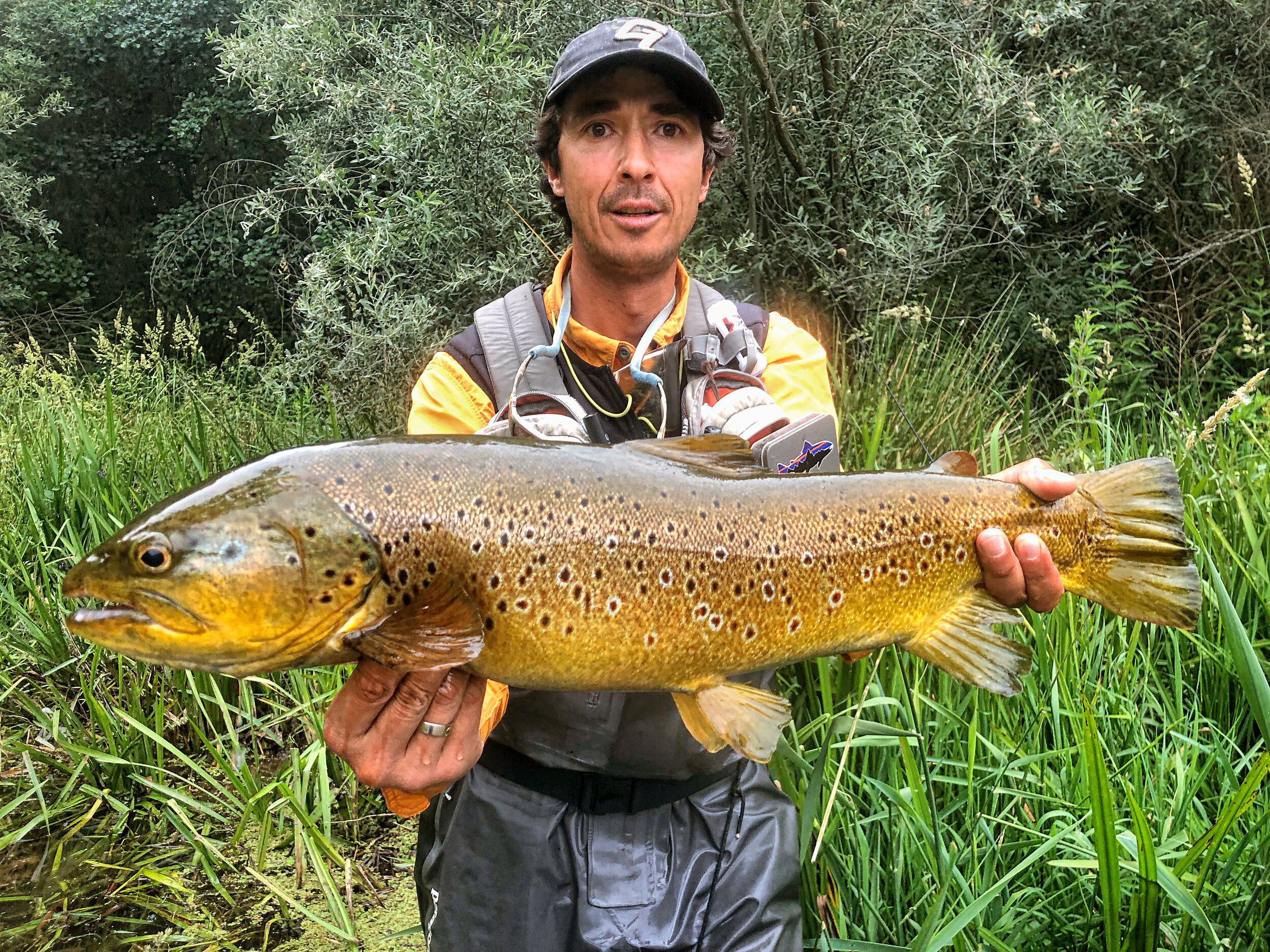
Pakito Iglesias
1 Choice of equipment Rods, reels, fly lines, fly floatants, clothes, glasses, and other useful items.
In my view, the ideal rod does not exist for fishing circumstance. To dry fly fishing I use 9-9,6 and 10 feet of line 4 and 5, everything depends on the fishing scenario and fish size that I think they live in the water. For nymph fishing, I use rods of more than 10 feet of line 3.
About reels, always reels Large Arbor, with good brake and capacity for few meters of backing. You never know if the trout of your life eats a fly.
I like lines with head always greater than 10 meters and in case of lines of 5 that they are able to achieve 15 meters. It is very helpful to shot from a considerable distance where sometimes big trouts will be positioned.
After many years of fishing, I came to the conclusion that the wader with zip is all comfort and boots always with good tungsten nails or in case, aluminium sheet.
Regarding clothes, I always wear a fleece overalls and a good clothes under wader and a chest pack.
Polarized glasses and cap are indispensable, I like caps and I appreciate always a donation 😉.
- 2 Leader material, build up, length and knots.
I like to use conical leaders from 10 to 12 feet that I put together different tipet depending on fishing scenarios.
I don´t usually fish with thin tipet , the most used are 4X-4,5X-5 y 6X.
The most used knots are: surgeon, micro throw and Clinch for joining my flies together with tipet.
-3 Approach and stealth
Depending on scenario for fishing I like to prepare fishing days beforehand and more if there are many fishing days even if I am an enthusiast of unexpected fishing days with a friend.
In fly fishing in the big river plates I can spend hours waiting for a good trout strikes and walking on the river bank looking for striking trouts.
- 4. Reading the water.
I have been putting in the river since I was kid and finally, it is an extra when we are able to read position where we can sense where trouts are positioned and we cannot see them striking on the surface. The knowledge of areas for fishing always is an extra to recognise hours, areas to wader rivers and to not have bad surprise. I fish always new areas but throughout season I like repeating fishing days in those areas and rivers where I know I find big trouts.
-5. Casting ability which casts are essential.
There is not doubt that being a good caster is important for different circumstances that we can find in our fishing days. Personally I am not good thrower, I consider myself medium thrower.
It is very useful a good rod with a fast action, a line with a good head and be tall to wader in the depths of big river plates.
-6. Entomology, what should we know.
Knowledge of insects that usually emerge in the areas and rivers that we fish is very important. I like always that my imitations are of the body color the most similar to the emerged but it is not less important right size. I think a fly shape to imitate is very significant.
7. Rise forms Can they tell us something?
I like observing fishes while they are striking. Seeing a kind of bait, we are able to determine the state of flies that the trout strikes. Anyway, I always think when a trout that strikes well and is not bothered it is important to throw with a good drift, with a right size and color fly in line with eclosion and it will not be difficult to trick her.
-8. Fly selection, Size, shape, materials, which flies are essential.
I usually take a greater selection of flies in my boxes, in range of 16-18 and 20.
In general, I don’t usually fish with flies smaller than 20.
I fish also with flies in size of 10 and 12 when there are big eclosions of Iberian rhitrogens, rhenanas or famous march brown.
I like very much CDC of wild mallard for making my flies. Always, as I am lucky and a hunter friend gives me their feathers. I like to applying silk and old rayons line 3277-273-431-249-254 to make bodies.
-9. Presentation and drifts.
I think this is one of the most important aspects in fly fishing.
In each scenario it can be absolutely different, areas with current, big plates with micro currents. It is important to know where place well in the area to fish and in this way can correct the line within our possibilities to make a good drift and fly presentation till reach an hunter area of trout.
-10. Upstream or downstream?
I do not have a marked preference to fish in one way or another. Mostly, I fish upstream.
Sometimes, because of the morphology of area to fish and areas where trouts are striking, there is no more remedy that fishing downstream so it involves me when I catch a fish, I have to be patient as soon as I catch and do not lose a fish easily.
-11. Fighting fish.
Whenever I can, in the fight with a greater trout I like to lower the river with her , if and when the river and the banks allow us.
In general, I do not fish with thin tipets so I like to pressure fishes and try to be in control as soon as possible, although not always it is possible, depending on the size of trout or there is area without current and then the fight is getting difficult.
I like to anticipate fish movement and so try to have the advantage over, even if it is not possible always in big rivers and with considerable bearing trouts.
by Pakito Iglesias









